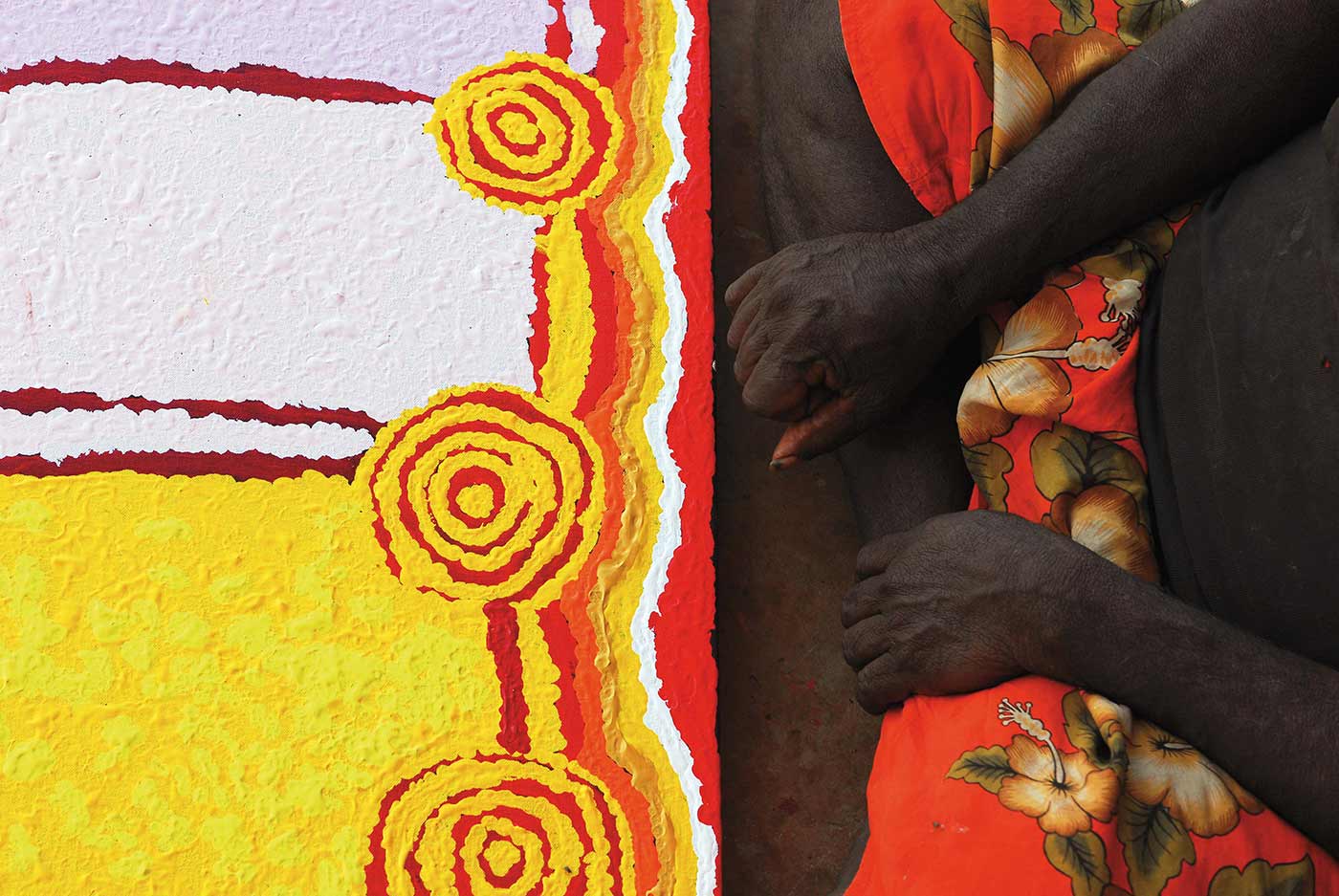The story behind the Canning Stock Route project (part two)
Hayley Atkins, Palm Spring, 2009:
The stories are all coming back. [The old people] been living their lives just singing and dancing through the law. That's what was precious to them back then and families and connections, the waterholes, dreaming — everything. It was all there. And they want to tell the whole world it's still theirs. And it's always been theirs.
Art connects people and communities, binds the spiritual with the physical, and establishes a sense of communication between maker and audience. Early on, consultation with artist groups resulted in the kernel of an idea that eventually grew into the Canning Stock Route Project: Aboriginal artists directly connected with the stock route would come together to paint their stories of Country, in Country.
These artists would be invited to participate in a six-week 'return to Country' trip along the stock route. The proposal quickly gathered support in communities and, between 2006 and 2009, the number of artists willing to participate exceeded 100.
As the project developed, however, it became clear that the Canning Stock Route story was less about the road itself than about the expanse of Country it bisected. The project came to focus on the artists' experiences of Country. By bringing together painting, story and film, the project became a vehicle for artists to give voice to their history.
For the participants, it was crucial for the ‘stories to be told for the stock route from the Aboriginal point of view ... If kartiya are celebrating 100 years, Aboriginal people should tell their story for history too’. [1]
This led to the formation of partnerships with art centres and communities, including Birriliburu Artists, Tjukurba Gallery (Wiluna), Kayili Artists (Patjarr), Mangkaja Arts (Fitzroy Crossing), Martumili Artists (Newman, Parnngurr, Jigalong, Kunawarritji and Punmu), Ngurra Artists (Wankatjungka and Nyumpan), Papunya Tula Artists (Kiwirrkurra), Paruku Indigenous Protected Area (Mulan and Billiluna), Warlayirti Artists (Balgo, Mulan and Billiluna), and Yulparija Artists (Bidyadanga).
From the beginning, the project's goals have remained the same: to record and share the vibrancy of desert life today; to communicate Aboriginal creativity and history to new audiences; to enhance the skills of Aboriginal professionals in remote areas; and to create new channels for collaboration between desert and city communities.
Note
1. Joy Nugget, Walmajarri, translator and cultural adviser, Mangkaja Artists consultation meeting, Fitzroy Crossing, 2006.
THE STORY BEHIND THE PROJECT:

